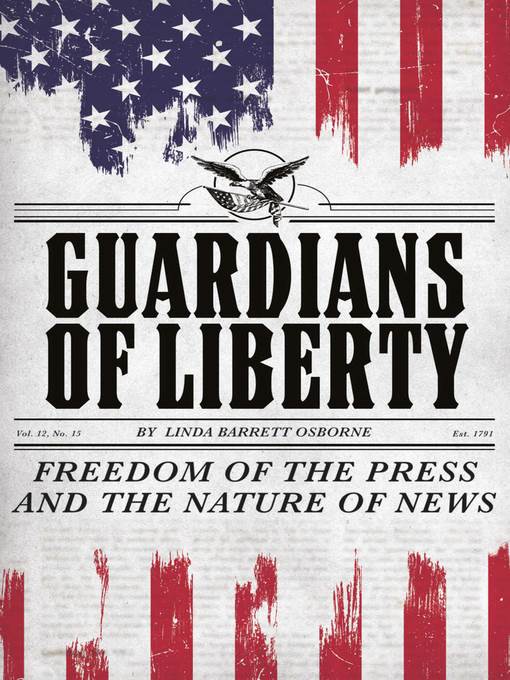
Guardians of Liberty
Freedom of the Press and the Nature of News
کتاب های مرتبط
- اطلاعات
- نقد و بررسی
- دیدگاه کاربران
نقد و بررسی

Starred review from July 15, 2020
"Knowing the story of why freedom of the press was important to the founding fathers...and how it has stayed a strong principle in American law and culture can help us understand its value today." This efficient text (an introduction and nine short chapters, buttressed by a timeline) offers an excellent foray into the hows and whys of U.S. press freedom, beginning just prior to nationhood. The accessible, mostly chronological text is full of short quotations from both primary and secondary sources. It includes excellent definitions, informative sidebars, and archival photographs. The ebb and flow of press freedoms over the course of the country's history are combined with succinct history of the means of communication, from printing on paper all the way through to today's social media. Careful scholarship links big questions about balancing transparency and national security to wartime reporting, the Pentagon Papers, Edward Snowden, Chelsea Manning, and more. The text warns about today's citizens' reading and listening only to outlets that support their own views and how that endangers democracy. President Donald Trump's media provocations are discussed along with the murder of Jamal Khashoggi and the work of Reporters Without Borders. Two cases involving high schoolers' freedoms are explored. A particularly noteworthy sidebar offers guidance on how readers can determine the accuracy of their news. For optimal use, readers should first have a rudimentary understanding of U.S. civics, which perhaps makes it better suited to middle and high school than elementary readers. Timely, essential reading. (index, select bibliography) (Nonfiction. 12-16)
COPYRIGHT(2020) Kirkus Reviews, ALL RIGHTS RESERVED.

August 1, 2020
Grades 7-10 This well-written book explains how the First Amendment to the Bill of Rights protects the freedom of the press by permitting the expression of different views, whether those viewpoints are widely agreed upon or not. After defining what the news is, the book provides an overview of press history from colonial times to the present. It describes the evolution of news dissemination, beginning with print and moving to radio, television, internet, and social media, and highlights court cases involving press freedoms. Readers may be surprised to learn that fake news originated in the 1800s. Included in the well-sourced back matter are critical-thinking questions that will spur debate and tips to help readers determine the accuracy of information. The author emphasizes the importance of a free press, but warns it can only continue if we believe in the principle, practice it, and value it. Readers will find numerous examples that support this statement in this informative, timely resource.(Reprinted with permission of Booklist, copyright 2020, American Library Association.)

September 1, 2020
Gr 6 Up-This book seeks to live up to the promise contained in its subtitle-explicating freedom of the press and the nature of news. Nine chapters cover everything from the partisan press in Colonial and Revolutionary America to the incendiary rise of "fake news." In the introduction, Barrett Osborne poses a series of questions: "How does the press act as a watchdog against government abuses? Can freedom of the press exist in time of war without endangering national security? Why does it matter that different points of view are represented?" The text attempts to answer those questions by explaining the history of the press's role in American society as well as key controversies and court cases. Sidebars and highlighted feature segments provide additional information detailing technological advances that revolutionized journalism. Notable individuals and developments in the history of the news are also described. A time line of key events, source notes, and a selected bibliography round out this title. VERDICT A timely title that offers solid research and an engaging structure. Recommended for upper junior high and high school libraries, and students with a nose for news.-Kelly Kingrey-Edwards, Blinn Junior College, Brenham, TX
Copyright 2020 School Library Journal, LLC Used with permission.

























دیدگاه کاربران